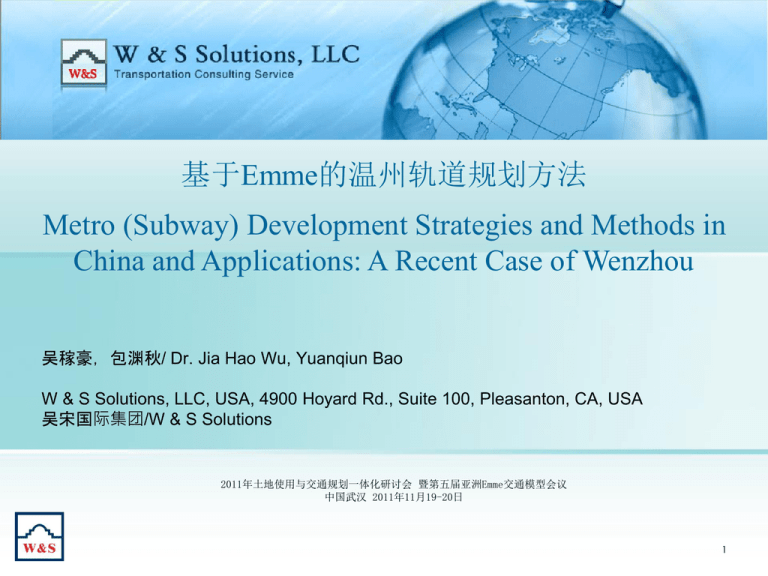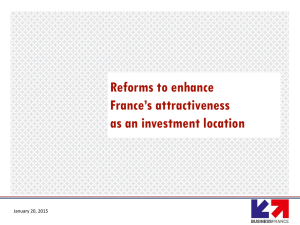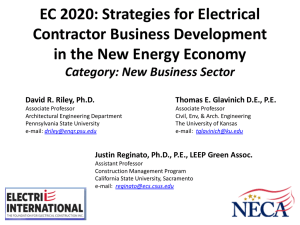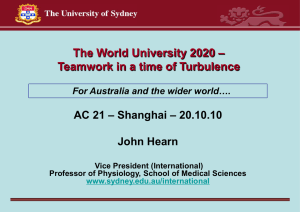Professional Traffic/Transportation Modeling Technologies
advertisement

基于Emme的温州轨道规划方法 Metro (Subway) Development Strategies and Methods in China and Applications: A Recent Case of Wenzhou 吴稼豪,包渊秋/ Dr. Jia Hao Wu, Yuanqiun Bao W & S Solutions, LLC, USA, 4900 Hoyard Rd., Suite 100, Pleasanton, CA, USA 吴宋国际集团/W & S Solutions 2011年土地使用与交通规划一体化研讨会 暨第五届亚洲Emme交通模型会议 中国武汉 2011年11月19-20日 1 大温州地区简介 Introduction to Wenzhou Mega Region •人口7,645,700 The area under it1s jurisdiction, which includes two satellite cities and six counties, had a population of 7,645,700. •城区人口1,423,600 Residents live in Wenzhou's city proper •城区面积 3000平方公里 A total area of 3000 square KM。 温州轨道交通规划进展 Wenzhou Subway Planning Project History 2009/09/16: Planning Project Started 2009/12/22: Project on the Local News: 温州轨道线网规划启动编制 一核一片将覆盖9个县 2009年12月22日 06:23:10来源:温州日报 2010/01/27: Survey Results Presented 2010/09/23: Urban Rail Planning on the Local News 温州轨道交通线网规划最终报告通过专家评审 2010年09月23日. 温州日报 2010/10/30: Whole Planning Project Finished : Wenzhou Urban Rail Project History: Travel Demand Model Developed by Wu & Song Modeling Process Framework ArcGIS/Emme Model ArcGIS/Emme 交通需求模型 Resident Model 居民出行模型 Non-Resident Model 流动人口模型 Major Terminal Model 枢纽点模型 Truck Model 机动车模型 IX-XI Model 出入境模型 Time of Day Model 高峰小时模型 Feed Back Loop 四阶段循环反馈计算 Multi-Class Model 交通分配与校核 2009/2020/2050 Land Use Allocation 2009/2020/2050年土地布局 土地使用的分布直接决定了城市出行特征 TAZ Systems 交通分区 交通小区在模型中简化为型心点 内部小区:563个 外部小区:90个 现状出行目的分布与模式划分百分比 Existing Trip Purpose, Distribution, Mode Choice Percents 居民出行模型 主城区的出行交换量较高,其它地 区较为平缓,单中心特征明显。 2009年居民全日出行中区全方式期望线 Gravity Model Parameters Estimated 居民出行分布参数标定 HBW出行标定 HBS出行标定 2009 Computed vs. Observed Vehicle Volumes 2009 年机动车交通流量校核 2009 Computed vs. Observed Volumes with ODME Tools 2009 ODME 机动车OD精细化调整 2009 Transit Network 年公交网 2009年公共交通建设尚不完善,公 交营运线路主要集中于主城区,外 围地区线路分布零散,公交发展仍 有较大潜力。 公交线网的布设直接影响公交客流的走向 2020 Resident OD Trip Distribution 年居民全日出行中区全方式期望线 OD Trip Distribution Moves to the East with Multiple Major Centers 20年出行期望线逐步向东部转移,多中心特征初步呈现。 2020 Major Transit/Subway Network 2020 日总出行量与公交出行分布,公交干线 2020 Daily Total and Transit Trip Distributions vs. Major Transit Network 2020 公交主干线 2020 Major Transit/Subway Network 2020 与2050 出行划分百分比 2020 and 2050 Trip Percents by Mode 2050 大温州地区与主城区的土地使用 2050 Wenzhou Mega Region and City Proper Land Use Allocation 2009,2020 and 2050 Populations 各年份中区常住人口分布对比 人口发展总体呈现稳步上升的态势, 其中主城区人口略有下降,半岛地 区人口提升较快。 2020 地铁与BRT 线路 2020 Subway and BRT Lines 2020 and 2050 From Sketch to Detailed Transit Network 骨架公交 Sketch Network 详细公交 Detailed Network 从骨干公交网到详细公交网 2009 and 2020 Network P.M. V/C by Road Class 各年份晚高峰机动车饱和度分类比重 100% 100% 90% 90% 80% 80% 1.25- 70% 1.25- 70% 60% 1-1.25 60% 1-1.25 50% 0.75-1 50% 0.75-1 40% 0.5-0.75 40% 0.5-0.75 30% 0.25-0.5 30% 0.25-0.5 20% 0-0.25 10% 20% 0-0.25 10% 0% 0% 高速公路 快速路 主干道 2009 次干道 支路 高速公路 快速路 主干道 次干道 2020 支路 2009 and 2020 P.M. Vehicle Volumes 晚高峰道路断面机动车流量 2009年 2020年 2020 Transit Daily Volumes 全天公交流量 2020 地铁方案 2020 Subway Alternatives 1. Balance X Shape:均衡的X型线网 2. One Curve Line:扁担型线路一肩挑 3. Extension to Peninsula :超前改造半岛快线 2030 地铁方案 2030 Subway Alternatives 1. Volume Balanced Network: 客流均衡分布的网络方案 2. High Volume Focused Network: 客流强聚集的市区普线网 3. High Building Density Focused Network : 构筑高密度的市区普线网 结论 Conclusions 1. 采集了居民出行与交通流量数据 Household Survey and Travel Data Collected 2. 参考了城市总规与交通规划 City Master General Plan and Transportation Plan Revised and Used 3. 建立并修正模型 Travel Demand Model Developed and Calibrated 4. 用公交OD需求构造公交主干道 Travel OD Demands Used to Develop Sketch Transit Network 5. 分析地铁方案 Detailed Subway Alternatives Analyzed 6. 对比现状,2020 与 2050 年的结果与流量 Results of Existing Year, Year 2020 and Year 2050 Compared and Justified 7. 调整轨道线附近的土地使用量 Land Use Allocation Along Subway Readjusted Manually 28 Questions 问题 ? 谢谢! 30







